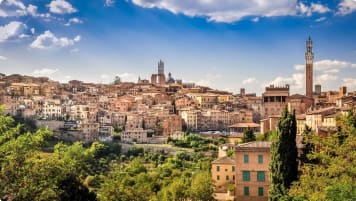Key Men and Women of Renaissance Florence
Five Key Figures of Renaissance Florence | Small Group Tours Regarded as the ‘birthplace of the Renaissance’, Florence from 1400 to 1600 was in a religious, cultural and political ferment that was crucial to shaping…
8 Oct 19 · 11 mins read
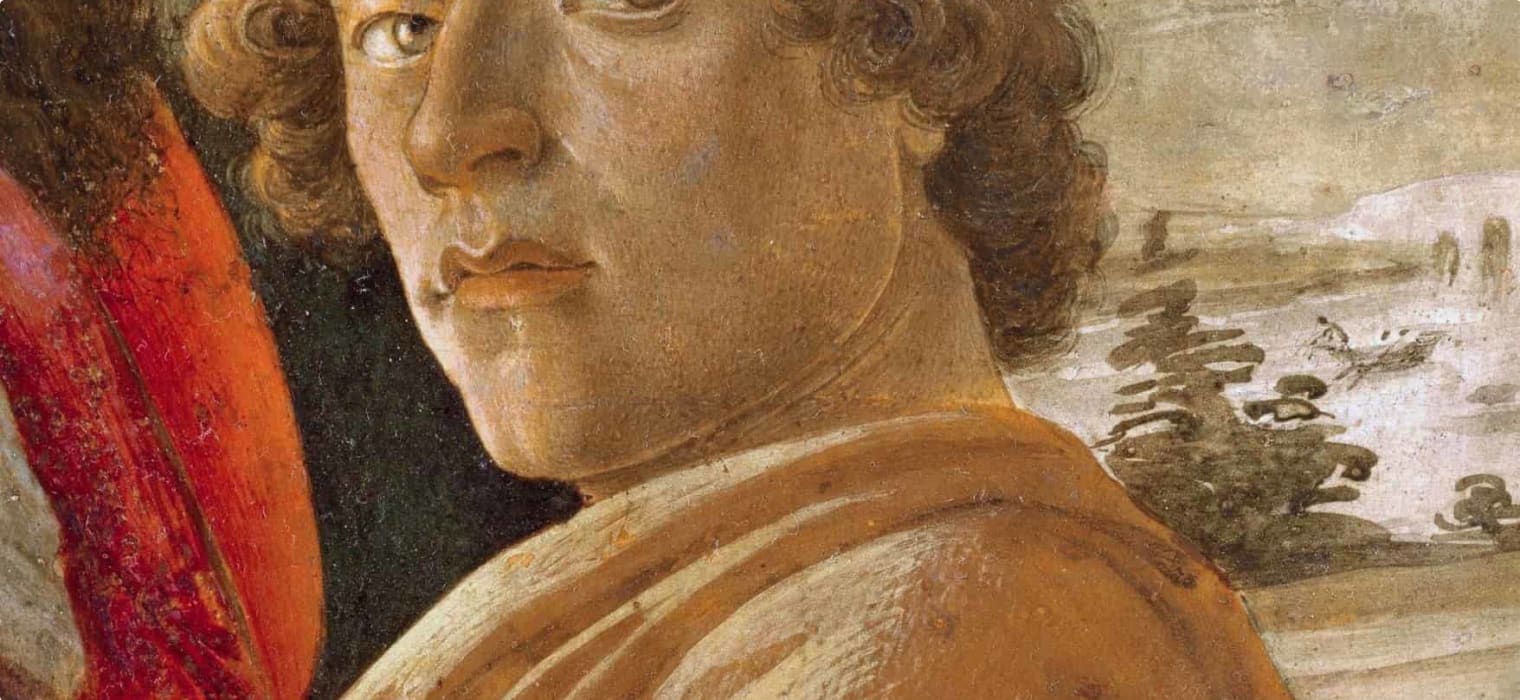
Five Key Figures of Renaissance Florence | Small Group Tours
Regarded as the ‘birthplace of the Renaissance’, Florence from 1400 to 1600 was in a religious, cultural and political ferment that was crucial to shaping the modern world. The power of its leading family, the Medicis, spread across Europe and the city became home to the intellectual development of humanism and the artistic innovations of Donatello, Botticelli and other artists.
In this article, we attempt to bring to life the diversity of Renaissance Florence through a focus on five key men and women – some of whom will be known to you and others who have been forgotten by history. For more fascinating figures from the Renaissance, make sure to read our earlier article on women of the Renaissance and our article on the Medici.
1.The Stateswoman: Lucrezia Tornabuoni (1425-1484)
Though less remembered than her male relations in the Medici dynasty, during her lifetime, Lucrezia Tornabuoni de’ Medici could have made a claim to having been the most powerful woman in Italy. The wife of Piero and the mother of Lorenzo the Magnificent, Lucrezia was also an influential stateswoman, philanthropist, and writer in her own right.
Born in Florence in 1427, her childhood coincided with one of the city’s most glorious periods. Under the sure hand of Cosimo de’ Medici, the small but powerful city was growing to international prominence. This was coupled with the new ideas of humanist philosophy, which promoted critical thinking in challenge to the superstition of the medieval era, and emphasised the value and agency of human beings.
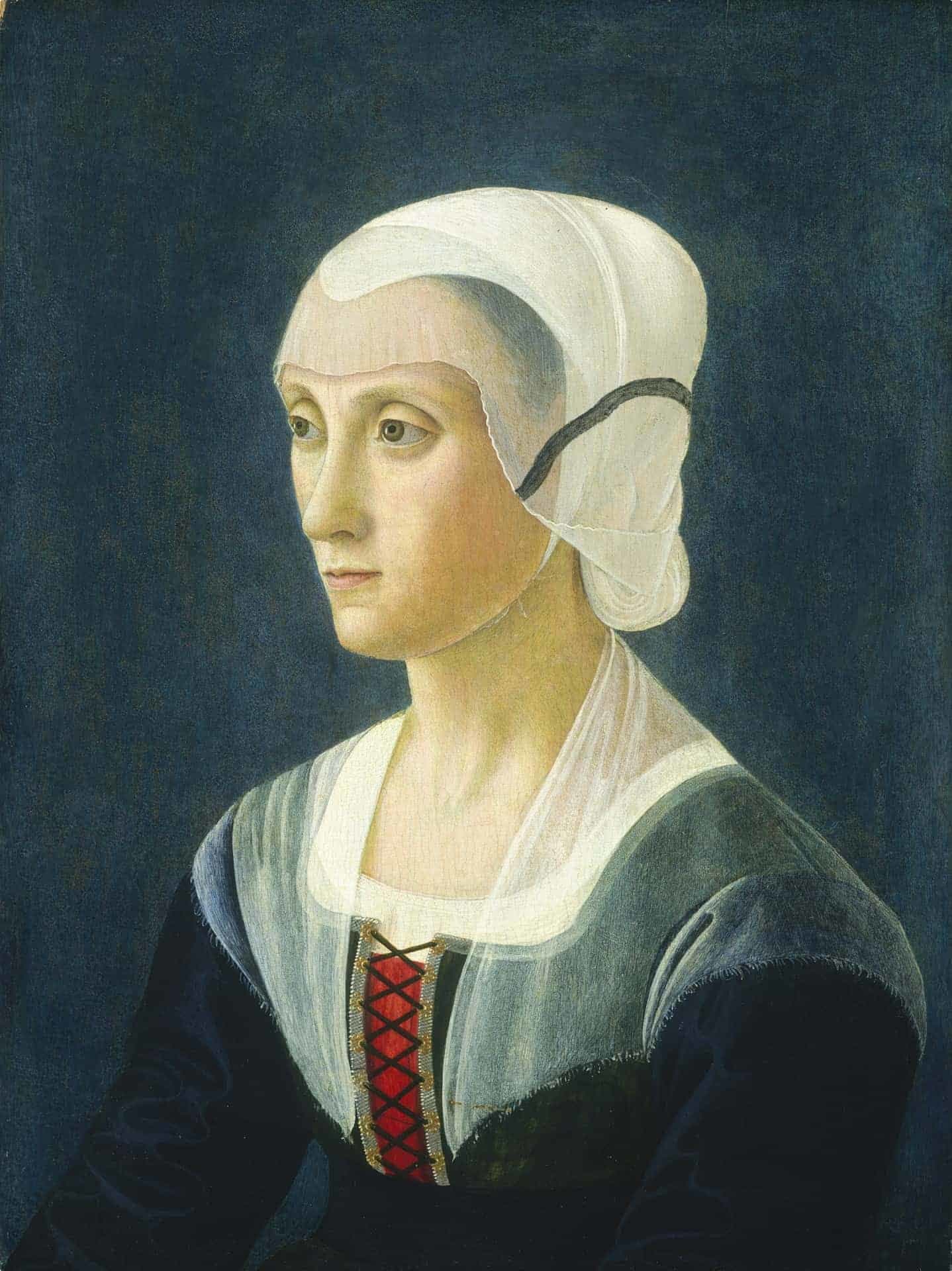
Tornabuoni lived her life at the centre of Florentine culture and politics. At the age of 17, she entered an arranged (though apparently loving) marriage with Piero de’ Medici, the son and heir of Cosimo. The marriage was a shrewd move on Cosimo’s part. The Medici, a banking and mercantile family, had only come into prominence in the previous generation. By marrying his son to Lucrezia, who was of noble heritage, Cosimo was able to legitimate Medici power.
Lucrezia’s husband, Piero, assumed power following Cosimo’s death in 1464. While Piero was introverted and lacked social skills, Lucrezia was became widely known for her grace and warmth. Piero (who was nicknamed ‘the gouty’) was often bedridden, so Lucrezia took on considerable responsibility, including diplomatic missions. In 1467, for instance, he sent her to Rome to discuss Venetian aggression against Florence with the Pope.
When Piero died in 1469, their 20-year-old son Lorenzo became the de facto leader of Florence. Like his father and grandfather before him, Lorenzo sought out Lucrezia’s advice. Though she had no formal training in humanism, she was well educated and had long experience dealing in Florentine and international politics.
Beyond her role as political advisor, Lucrezia was well-known and beloved in Florence for her charity. Destitute girls asked her for dowry funds so that they could marry, families asked her to mediate long-lasting feuds and prisoners asked her for clemency. They addressed her as the ‘Most Illustrious Mother’, and praised her compassion and mercy.
She was also a landowner and businesswoman, something relatively unheard of for the time. Lucrezia own multiple properties that she collected rent on and even purchased a defunct thermal bath that she transformed into a profitable business.
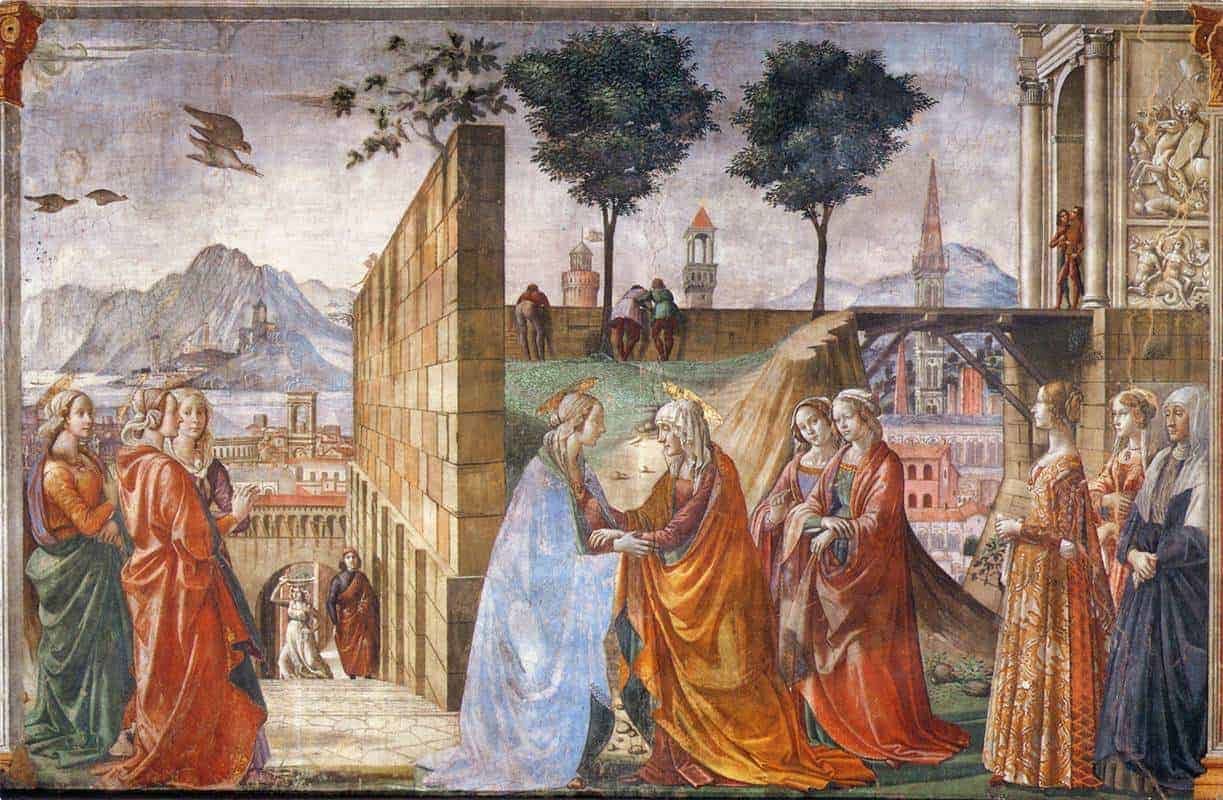
However, Lucrezia’s public activities also attracted criticism. In the early Renaissance, women’s lives were restricted to the private realm. The archbishop of Florence preached that women should leave home only for mass, and to further limit opportunities for sin, restrict those ventures only to feast days. Representing her husband at the papal court shamed Pietro, according to critics of the Medici, and degraded Florence.
Perhaps because of this, Lucrezia’s writing remained private, intended only for family and friends. Her work usually brought to life biblical stories. Possibly commenting on her public role, she chose to focus on women who transgressed the social boundaries of their time. In her elegant retelling of the Book of Esther, Queen Esther defies custom by entering the king’s court without permission in order to expose a plot against the Jews. She used her writings to justify her own life, claiming that the good of the people sometimes required women to cross over into what were considered to be men’s spaces.
Today, Lucrezia is recognised as a figure of the Renaissance who exercised a striking influence over the politics and culture around her, despite living in a time where women were relegated to the public sphere. She is significant not just because of who the men in her life were, but because of her writings, diplomacy and entrepreneurial spirit.
2. The Artist: Sandro Botticelli (1445-1510)
Though recognised today as one of the greatest painters of the Florentine Renaissance, Sandro Botticelli has long been seen as an ‘outsider’ within the tradition of Renaissance Italian painting. Unlike his contemporaries Leonardo da Vinci and Michelangelo, he was not concerned with human anatomy or classical art, and, apart from a brief period of time in Rome, he spent his entire life in Florence.

The seventh of eight children to a tanner and his wife, Botticelli began training as a goldsmith but preferred painting. Around 1460, he was apprenticed to Fra Filippo Lippi, a highly regarded artist whose patrons included the Medici family. He became a master artist in the 1460s and established his own workshop around 1470. Absorbed in his art, he never married and continued to live with his parents for his entire life.
In the 1470s, Botticelli began his long association with the Medici family. Particularly notable from this period is his Adoration of the Magi, a glorification of the Medici men: Cosimo kneels before the Virgin as his sons Piero and Giovanni and grandsons Lorenzo and Giuliano look on. On the far right is a self-portrait of the artist, portrayed as a fair-haired, young man.
The Adoration of the Magi drew the attention of Pope Sixtus IV, and Botticelli moved to Rome to contribute to the painting of the Sistine Chapel. After completing the frescoes, Botticelli returned to Florence in 1482, where he did a good business with upper class families seeking fashionable art for their homes.
This period also saw the completion of his best-known works, Primavera and The Birth of Venus, both commissioned by the Medici family. They follow the Neoplatonic fashion of the day, with its fixation on ancient mythology. Yet, though Botticelli was aware of the principles of perspective, he chose to reject it in favour of a flatter, more stylised approach that was all his own.
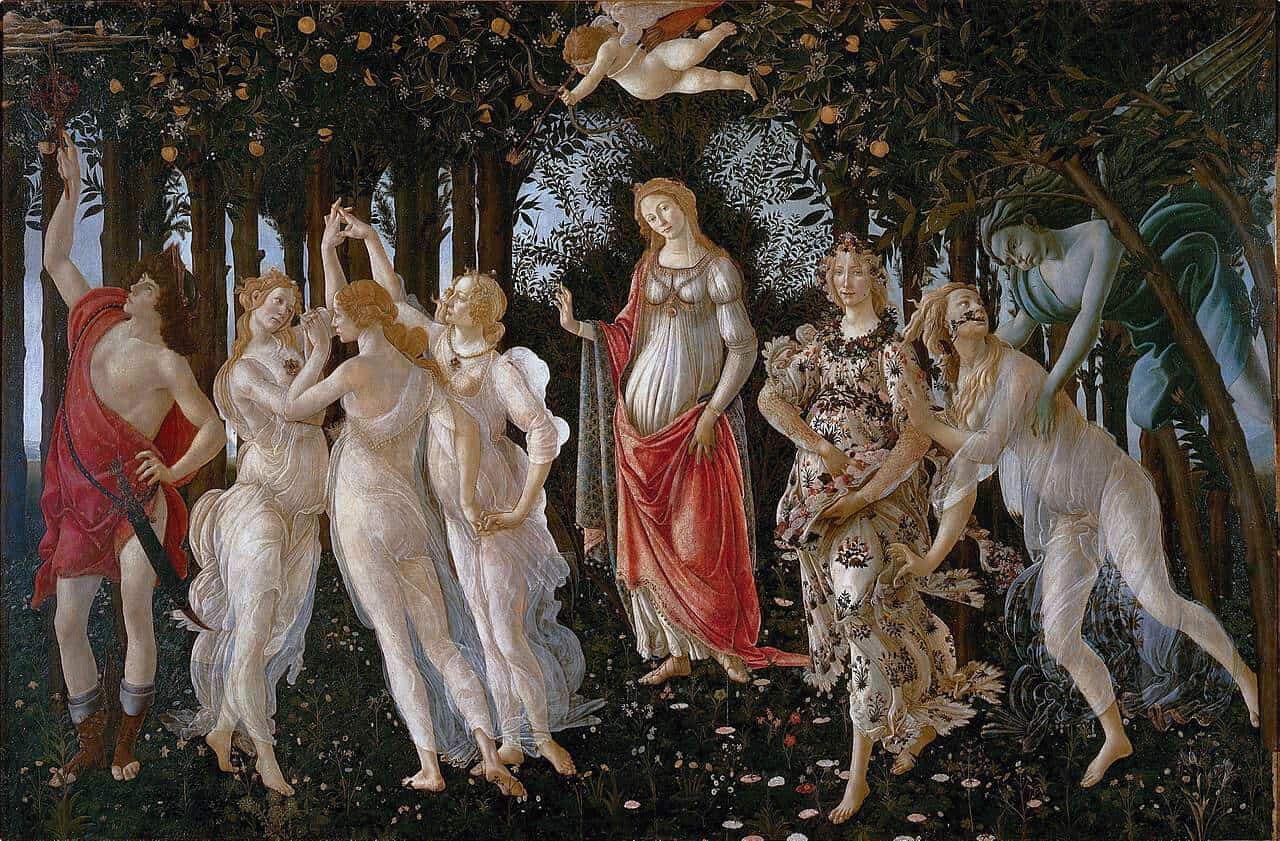
By the last decade of his life, Botticelli’s work began to seem dated in comparison with the innovations spearheaded by Leonardo da Vinci and Michelangelo. His popularity waned after his death and for centuries he was largely forgotten. In the 19th century, however, Botticelli’s work was championed by art critics such as John Ruskin, and influenced the Pre-Raphaelites. Today he is cited by many as one of the most important Italian painters of all time and a symbol of the Early Renaissance. The splendour of his works and the almost-mythological scenery they depict are valued much more now than they previously were and the Uffizi Gallery houses many of his masterpieces.
3. The Priest: Girolamo Savonarola (1452-1498)
The fire-and-brimstone preacher Girolamo Savonarola has long been one of the most divisive figures of the Renaissance, simultaneously held up as a predecessor of Protestantism and an advocate of democracy and condemned as a religious fanatic. Whatever your take, it’s hard to deny that he’s one of the most fascinating figures of the period.
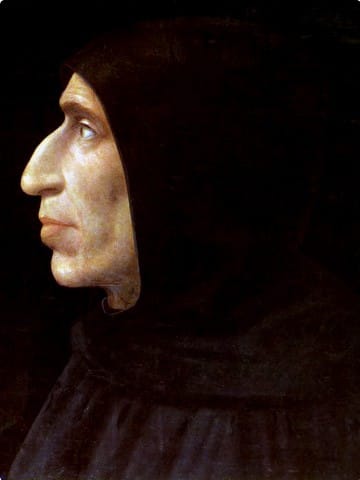
Savonarola was born to a well-off family in Ferrara, a city in Northern Italy. He graduated with a Bachelor of Arts from the local university and his family expected that he would follow his father’s footsteps into medicine.
In contrast to the typical fun-loving men of his generation, the young and rather joyless Girolamo preferred to spend his days writing moody poetry about the impending ‘Ruin of the World’ due to sin and avarice. Humanity, he lamented, is ‘so pulled down by every vice/that it will never stand again.’ In 1475, disappointing his family, he ran away to join a monastery in Bologna.
In the spring of 1485, Savonarola received a job in Florence, teaching logic at the Dominican convent of San Marco. His unpolished delivery and strange northern accent repelled listeners, however, and he was sent back to Bologna to improve his public speaking skills. He returned in 1490, much more confident than before.
Florence’s long success as a political and cultural mecca had created a large upper class with a taste for luxury goods. In lengthy sermons filled with apocalyptic imagery, he castigated this upper class for its tepid piety, greed, and love of sensual pleasures and called on the people to abolish the oligarchic government of Florence.
Savonarola developed a large base of followers, dubbed by opponents ‘the wailers’ for their habits of weeping during the friar’s sermons. Children were enlisted to report on their neighbours and relatives’ immoral actions, and during Carnival they were dressed in white to disrupt the traditional festive debauchery. Any objects that seemed sinful – playing cards, mirrors, pagan-themed art, erotic books, and even wigs – were piled in the main government square to be burned in what became known as the ‘Bonfires of the Vanities’.
When the French king reached Florence during his invasion of Italy in 1494, Savonarola publicly thanked the confused monarch, believing that Florence had justly received God’s wrath. During this time, Savonarola became a leading rebel and helped Florence reach an agreement with France that resulted in peaceful occupation and when the army left eventually, he was hailed as a hero.
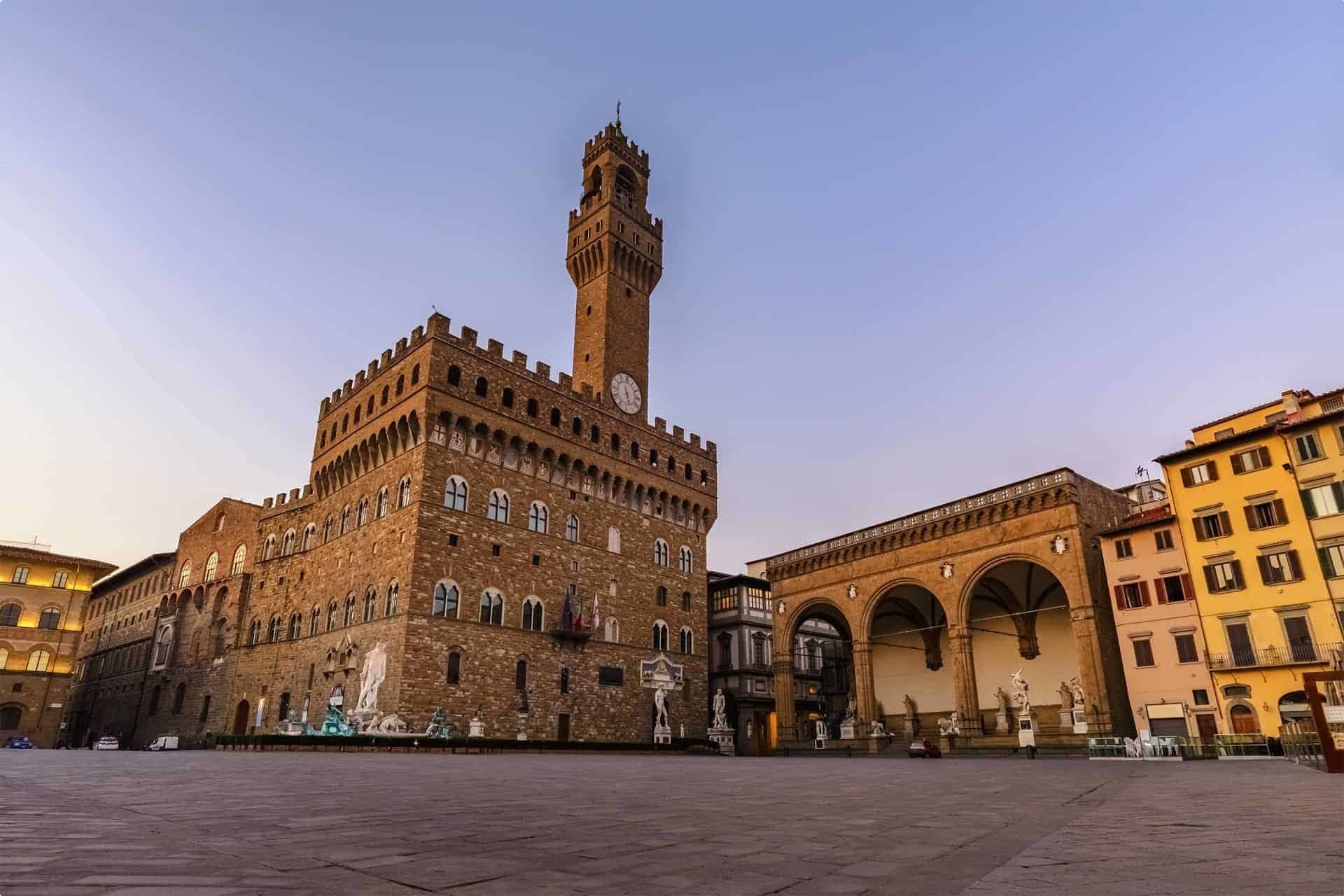
However, Savonarola’s denouncing of luxury and laxity gave him some powerful enemies, one of them being Pope Alexander. Pope Alexander summoned Savonarola to Rome in 1495. Correctly surmising that this was a trap, Savonarola refused to go, and for three years ignored commands to cease preaching. In 1497, Pope Alexander finally excommunicated him. In Florence, Franciscans challenged the Dominican followers of Savonarola to a trial by fire. The townspeople gathered to see the drama, but a sudden storm halted the contest, and the people stormed the cathedral of San Marco. Savonarola was taken prisoner, and soon after was hanged and burned in the public square where he had once led the townspeople to burn their goods.
Today, Savonarola’s reputation has endured thanks passionate supporters of his who believe he should be made a saint due to his Catholic belief and martyrdom. who remain, five hundred years later, convinced of his Catholic belief and martyrdom, and wish for him to be a saint. Although he is infamous for his distaste of modern life, and pleasures, he was also staunchly opposed to clerical corruption, despotic rule and the exploitation of the poor.
4. The Political Theorist: Niccolò Machiavelli (1469 – 1527)
Given the ubiquity of the word Machiavellian to describe political deviousness, scheming, and unscrupulous behaviour, it may be surprising that the real Machiavelli was a rather quiet bureaucrat, who caused trouble for his hotheadedness rather than cunning.
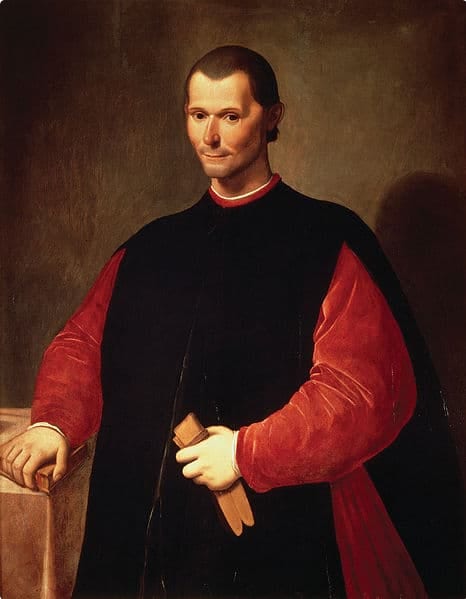
Born into genteel poverty, Machiavelli’s family were unable to afford the Greek lessons that were standard amongst Florence’s humanist elite. He was nonetheless trained in Latin and developed a deep fascination for Ancient Rome. Perhaps owing to his relative lack of status, he embraced the literature of Republican Rome, with its adages that a man’s true worth was determined by participation in public affairs. These ideas – perhaps for obvious reasons – were unfashionable under the Medici.
Machiavelli got his first job as a secretary for the city where he drafted government documents. When the Medici were ousted in 1494, Machiavelli, at only 29 years old, was put in charge of home security and foreign correspondence. Often blunt and impulsive in his dealings, he nonetheless recognised the similarities between his own experiences and those he had read in Cicero and Livy. One of his main projects during this time was overseeing the recruitment and training of an official militia but his army would turn out to be no match for the Medici family who returned in 1512, supported by Rome’s papal milita.
When the Medici retook Florence, Machiavelli was suspected of conspiracy and subsequently arrested, tortured, and then banished to his farm just south of Florence. It was during this period that he turned his hobby into his life’s work. He set about composing essays that became the modern discipline of political science, including The Prince. Contrary to its notorious reputation, the book was more descriptive than prescriptive in its claims that a prince had to operate free of all moral restraints. What concerned Machiavelli was whether or it it was possible to be both a good politician and a good person at the same time and what made someone an effective and accomplished leader.
After some time, Machiavelli’s friends persuaded Florence’s ruler, the Cardinal Giulio de’ Medici, to partially forgive him. He was commissioned to write a History of Florence. Machiavelli died in 1527 and The Prince was published five years after his death. The Catholic Church ultimately banned his works for 200 years because he argued that a good Christian could not be a good leader.
Today, Machiavelli’s influence is indisputable. While a persistent view of Machiavelli is one of an immoral cynic, his contribution to modern political thinking and disciplines such as International Relations and International Security is unparalleled.
5.The Poet: Laura Battiferri Ammannati (1523-1589)
The poet Laura Battifierri was born at a time of transition, as the older, mercantile, republican and humanist culture that had dominated Florence (and northern Italy) faded away in favour of a court society that stressed hierarchy over merit and innovation. The illegitimate daughter of a cleric and nobleman, Giovanni Antonio Battiferri, and a concubine, Maddelena Coccapani of Capri, from Urbino, Battiferri lacked ties to the elite. Unlike earlier artists such as Botticelli, Laura and her husband, the sculptor Bartolomeo Ammannati, were totally reliant on the support of noble sponsors.
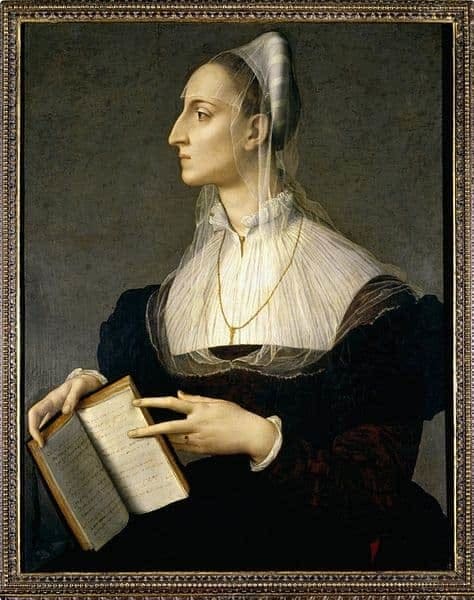
She had one thing in her favour, however: she was rich. Her father, powerful within the church, favoured her over his two sons, and Laura personally received a classical education from him. She also inherited most of his fortune.
Her first marriage to Vittorio Sereni, an organist in the service of the Duke of Urbino, appeared to have been happy. Nonetheless, she remarried to Ammannati only a year after his death. Bartolomeo and Laura appeared to have a loving relationship and a creative partnership. Bartolomeo received the patronage of Pope Julius III, and the couple moved to Rome, which Laura wrote warmly about in a series of poems.
In 1555, Julius died, and with him went the couple’s patronage. They moved to Florence, attaching themselves to the court of Duke Cosimo de’ Medici. Laura was devastated. She considered Florence to be uncultured, and wrote in her poems of ‘living in horrible darkness/and buried alive on the Arno’ [which ran through Florence].
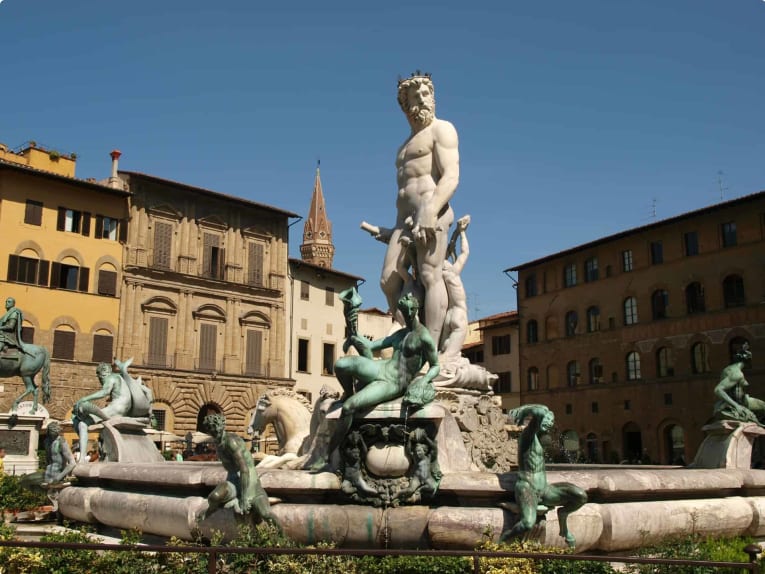
She soon found her place in Florence, however, and received the patronage of Duchess Eleanor of Toledo, the Duke’s wife. Her poems were acclaimed around Europe, and she became famous as far afield as Prague and Madrid.
In her later life, Laura became deeply religious. She abandoned secular poetry, and she and her husband became sponsors of the new Jesuit order. Withdrawing from the public world which had only recently opened up to women, she spent most of her days meditating or in prayer.
For more information on the history of the Renaissance more broadly, we recommend Robert C. Davis and Beth Lindsmith’s Renaissance People: Lives that Shaped the Modern Age, which was used as a basis for this article. Odyssey Traveller also runs a summer school, located in beautiful Hobart, with two in-depth courses on the Renaissance: Medieval Renaissance Women and Italian Renaissance Summer School.
Odyssey also offers the chance to walk the same streets as these men and women. For a focus on Florence during the Renaissance, think about one of these tours:
Florence: Living in a Renaissance City
Renaissance Italy, a story of five families.
Articles about Italy published by Odyssey Traveller
- Italian Renaissance Families: Ferrara and the Este
- Italian Renaissance Families: Mantua and the Gonzaga
- Italian Renaissance Families: Urbino and the Mentefeltro
- The Roman Empire
- Who were the Roman Emperors
- Questions About Italy
- Trip Advice for Travellers going to Italy
- 10 Great Books to Read Before You Visit Italy
- as well as more articles on Italy here
External articles to assist you on your visit to Italy
Related Tours

21 days
Apr, Aug, MayRenaissance Italy Tour: Story of Five Families
Visiting Italy
Explore Renaissance Italy on this small group tour though an examination of five significant city states. Florence, Urbino, Ferrara, Mantua and Milan were all dominated by families determined to increase the status of their city through art and architecture. Spend time coming to know the men and women who helped create the cities, as well as the magnificent legacy they left behind.
From A$14,995 AUD
View Tour
22 days
Mar, Sep, MayFlorence: Living in a Renaissance City
Visiting Italy
A small group tour with like minded people, couples or solo travellers, that is based in Florence. An authentic experience of living in this Renaissance city The daily itineraries draw on local guides to share their knowledge on this unique European tour. Trips to Vinci, Sienna and San Gimignano are included.
From A$14,375 AUD
View Tour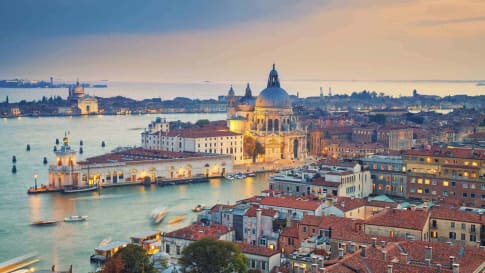
18 days
Aug, SepArt and History of Italy | Small Group Tour for seniors
Visiting Italy
Taken as a whole, Italian Civilization (which includes, of course, the splendid inheritance of Ancient Rome) is absolutely foundational to Western culture. Music, Painting, Sculpture, Architecture, Literature, Philosophy, Law and Politics all derive from Italy or were adapted and transformed through the medium of Italy.
From A$17,525 AUD
View Tour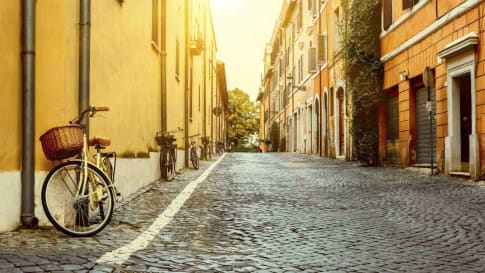
22 days
Sep, Apr, MarHeritage, Culture and History of Italy | Small Group Tours for Seniors
Visiting Italy
Rome, the world’s first superpower, lasted for almost a thousand years. In this small group tour for senior couples and solo travellers we thread our way through the Rome of the Emperors, then through the Italy of the Renaissance, Michelangelo, the Medici, and the Borgia. In the south, we visit the cosmopolitan city of Naples as well as Pompeii and the island retreat of Capri.
From A$14,375 AUD
View Tour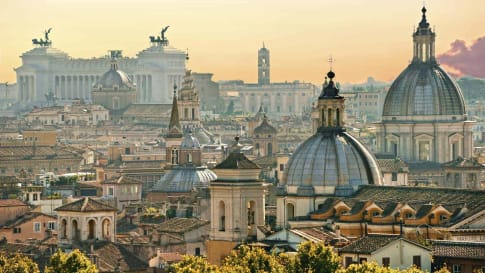
15 days
DecDiscover Rome | Cultural and History Small Group Tour for Seniors
Visiting Italy
Rome is arguably the most fascinating city in Italy, the capital city, once the centre of a vast, ancient empire and still today a cultural focus within Europe. Explore the city in-depth as part of a small group program spending 15 days exploring, just Rome and Roman History.
From A$9,235 AUD
View Tour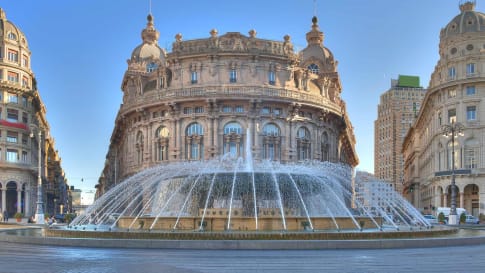
21 days
Apr, OctFour Italians: Genoa, Mantua, Orvieto and Bologna
Visiting Italy
A small group tour designed for senior couples and mature solo travellers, visiting Genoa, Mantua, Orvieto, and Bologna—cities where the Renaissance flourished beyond Florence, Venice, and Rome. This program takes you off the beaten path to explore Italy’s rich history and culture with like-minded people, offering a deeper experience of one of Europe’s most captivating countries.
From A$17,465 AUD
View Tour
20 days
JulItaly Puccini Festival small group Tour
Visiting Italy
The Puccini festival is an escorted tour complete with local guides as part of our small group travel program, we will also visit Rome, Siena, Florence, Lucca, Viareggio, Genoa, Milan, Verona, and Venice. Join like minded people on this European tour in Italy. For solo travellers there is a nominal single supplement charged.
From A$15,995 AUD
View Tour


